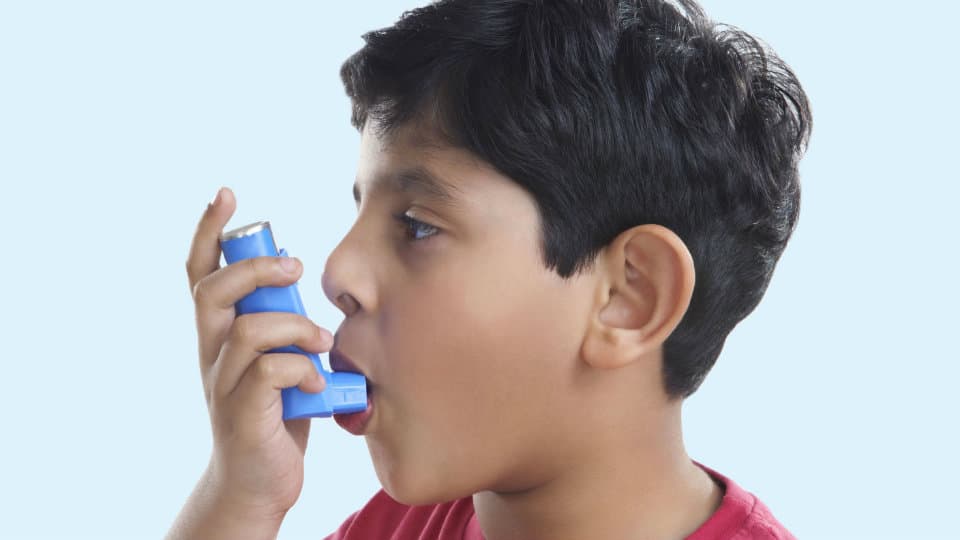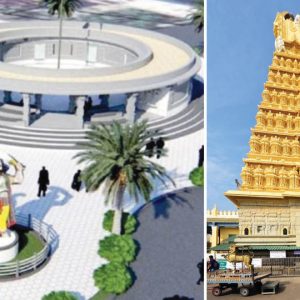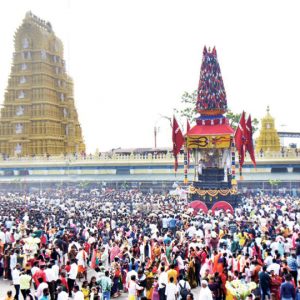Allergy is an abnormal exaggerated Immunological reaction to substances that are generally considered ‘harmless’ to most of us. The main reason of being allergic is due to the genetic tendency and environmental interaction. Around 20% of the population has this tendency. Allergy can start at any age: even from birth till old age. Generally, allergies are noted in children after 1-2 years of age and they increase as the child grows into teenage, often into adulthood. Persons can get allergic to inhalants (substances in the atmosphere like pollens from plants, trees, shrubs; molds from moisture and warmth; dust mite, microscopic indoor insect, foods, insect venoms: bees). One had to wait almost 5 years to identify 10 cases of allergic disorder 75 years ago. At present, you need not wait even 5 minutes to identify a dozen persons with allergies. Two major global studies done recently showed that the prevalence of allergies and asthma are definitely on the rise both in developed and developing countries including India. A study done by Dr. P.A. Mahesh and group in schools of Mysuru showed a 10% increase in prevalence of allergies every year over a period of 5 years. The author, Dr. P.K. Vedanthan, a native of Mysuru, graduate of Mysore Medical College, has lived in USA for the past 45 years. He has specialised in allergy, asthma and Immunological diseases. During his yearly visit to his family in the early 80s, he found that there was a total lack of available care for asthma and allergic patients in India. This lead to form an organisation named ‘International Asthma Services’ (IAS), a registered charitable institution in Colorado, USA in 1992.
By Dr. P.K. Vedanthan
Allergy is now considered a ‘Life style’ disease. Peoples’ life styles have changed considerably especially over the past 4-5 decades. People are walking less, exercising less, eating more, eating more often sugary, oily, fatty, tasty foods rich in calories. This has lead to higher prevalence of obesity, heart disease, arthritis, allergies, asthma as well as psychological diseases. The ‘Mobile phone’ has been a ‘double edged’ sword. It has made the world ‘smaller’, more connected, efficient and very informative. Everyone has access to a ‘lot of information’ at the finger tip. This also has resulted in lack of personal interactions, sleep and postural issues, as well as psychological issues.
We performed an interesting study around 1997-98 to study the prevalence of allergies and asthma in rural and urban locales in India. This study was done in cooperation with the University of Colorado, National Jewish Hospital, Denver Colorado USA and Allergy, Asthma & Chest Centre in Mysuru. We studied around 180 children between 6-16 years of age between two locations — Mysuru city and Vinobha village (near Hunsur) where people were basically agriculturists and stone cutters by occupation. The study involved, analysis of indoor dust samples and allergy skin testing of the children. There was close animal contact, extensive usage of cow dung, more siblings in the household in the rural area. We found that the children in Mysuru were 7 times more allergic and had 6 times more chances of developing asthma. The drastic differences were closely related to the usage of cow dung indoors for domestic purposes (95% of rural huts use fluidised cow dung solution on their floors to keep the insects away), very close animal contact in the rural setting and much higher use of soaps, antiseptics, antibiotics among children raised in Mysuru city. This is in accordance with a famous ‘hygiene hypothesis.’ In this hypothesis, microbial exposure in early childhood seems to be protective against allergies and asthma. In rural areas, due to the close animal contact and usage of cow dung indoors, there is heavy microbial exposure. This is totally lacking in the urban setting and this leads to delay in immunological maturation, and hence for the higher prevalence of allergies, asthma and other auto immune diseases (arthritis, diabetes and also neurological). This was the first study done in India and has been widely quoted in world literature.
IAS has served nearly 40,000 patients free of charge and millions of Dollars’ worth of free medical care, tests, medications and advice has been rendered over the past 25 years. IAS was awarded the prestigious award namely ‘Excellence in Global Health Award – 2015’ by the Centre for Global Health,University of Colorado, Denver, Colorado, USA .
IAS has also recently (in January 2016) in partnership with Mysore Medical College & Research Institute (MMCRI) has opened a highly-subsidised/charitable clinic namely, Swaasha Allergy Asthma Clinic (SAAC) at the Cheluvamba Hospital complex, OPD.
Respiratory burden in Indian scenario: 1. Traffic Related Air Pollution (TRAP): Main culprits are diesel exhaust fumes; 2. Biomass fuel usage: 90% of the rural population use biomass for cooking and heating purposes; 3. Fire crackers: Deepavali festival contributes significantly to this issue; 4. Indoor: Incense sticks, tobacco smoke (beedi, cigarettes, mosquito coils, new furniture, carpets, pressed wood, cooking gas, kerosene lamps).
Biomass fuel usage leads to major lung diseases like Chronic Obstructive Pulmonary Disease (COPD) in nonsmoking women and children. The good news is that, there are environmentally safer stoves available that could be used in their place. They reduce the smoke exposure by nearly 60% as well as utilise 50% less fuel.
India also offers several choices of treatment for persons suffering from asthma and allergies:
- Allopathy 2. Ayurveda 3. Homeopathy 4. Siddha 5. Yoga 6. Herbs 7. Fish therapy 8. Magnet therapy.
In review of the Indian Medical literature, the standard of therapy for such disorders is still a ‘lot to be desired.’ Attempts are being made now to educate the health professionals at the primary care level, improve infrastructure and also establish a Centre of Excellence for Research, Education and Training to serve the needs of our country.








Very enlightening article. indeed an eye opener. professor pkv has rightly pointed out the perils of modernisation.
A very good article by Dr P K Vedanthan who divides his time almost equaly between USA and India and has vast experience in Allergy Asthma management and education. I have personal experience to share our views from the past 40 years and also happened to be receipient of Life Time Achievement Award of International Asthma Services IAS.
However regarding his clam on Hygiene hypothesis it is still debatable and need more researces with multi centre and uniform methodology to validate in the country. I agree that Allergy has increased several fold in the country during the last few decades as studied by a multicentre study funded by Ministry of Environment and Forests, New Delhi undertaken by Dr AB Singh from CSIR -Institute of Genomics and Integrative Biology Delhi about a decade ago. Country definitely needs this specility to be recognised by Medical Institutions and Regulatory Agencies which is stlll lacking in the country.
A very educative article highlighting the vagaries of modernization by my old friend Dr. P.K. Vedanthan and hats off to him and his wife for all the services they are associated with about allergy and asthma not just in Karnataka or India but all over the world. May his tribe increase…..
A very educative article highlighting the vagaries of modernization by my old friend Dr. P.K. Vedanthan and hats off to him and his wife for all the services they are associated with about allergy and asthma not just in Karnataka or India but all over the world. May his tribe increase…..